A boxwood shrub (Buxus spp.) for a gardener is like a block of uncut wood for a whittler. In the hands of a master, it can be shaped into something functional, aesthetically pleasing, or both. It holds pure, untapped potential.
However, a hunk of lumber doesn’t slowly grow into an unappealing mass in your yard if left untouched. At least, not anymore. Its days of being a plant are over, obviously.
But a boxwood shrub is a different story: it’ll grow six to 12 inches per year under ideal conditions, depending on the variety. That’s slow enough to sneak up on you, but fast enough to turn a well-shaped hedge into a sloppy mess before you know it.
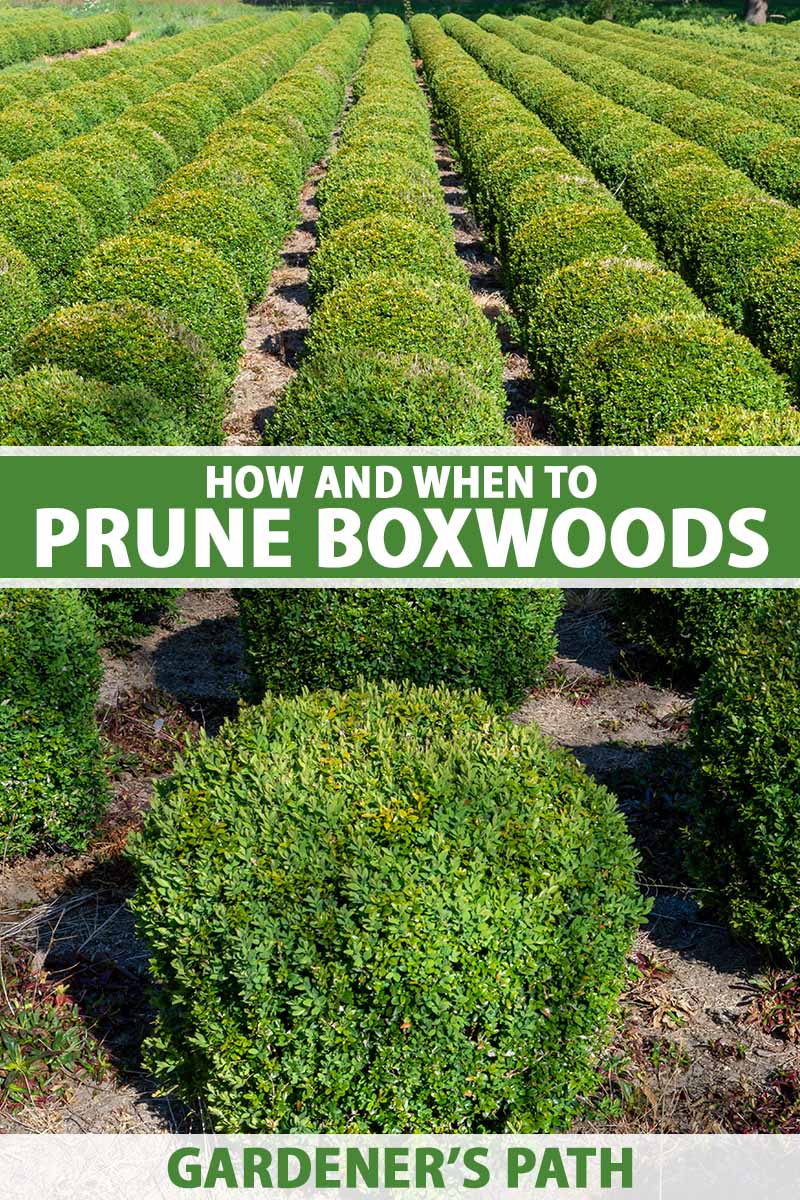
We link to vendors to help you find relevant products. If you buy from one of our links, we may earn a commission.
Do you have to prune boxwoods? Not necessarily. But keeping your Buxus looking sharp and free of disease does require some pruning. Plus, wouldn’t it be tragic if such a gorgeous canvas was ignored and left blank?
For those Googling how to prune a boxwood, you’ve come to the right place. In this guide, we’ll go over the what, when, why, and how of pruning your Buxus.
If you need a refresher, our article on growing and caring for boxwoods should help jog your memory.
Here’s what’s on the docket:
What You’ll Learn
Why Even Prune?
Before you head outside to your hedges with sharp objects, it’s important to know why.
Aesthetics
Whenever I find myself leafing through old yearbooks and wincing at my disheveled headshots, I’m reminded of the importance of a good haircut. And while boxwoods don’t have hair, keeping them trimmed up is a must for a good-looking landscape.
Unfortunately, boxwoods usually don’t grow evenly. One side could grow faster than the other. Some stems could make a break for it while others hang back. Structural damage to the shrub could cause misdirected growth, or halt it altogether.

Luckily for gardeners, pruning is a reliable way of taking a boxwood’s appearance into your own hands.
Pruning lets you form a Buxus shrub into a perfect sphere, a finely-honed block, or whatever shape you want. Skilled topiary artists can even sculpt them to look like objects, animals, or actual people!
Sometimes, plants look their best when they grow naturally. But other times, we gotta step in and make modifications ourselves. Visually, boxwoods definitely benefit from some edits.
Health
Pruning a boxwood isn’t just for vanity. It’ll also lessen the odds of disease and pest infestation.
As a Buxus shrub grows thicker, the airflow between stems and leaves decreases. This reduced airflow also increases the time a plant takes to dry after rainfall or irrigation.
Since many pathogens love wet conditions, this prolonged period of wetness promotes disease development.
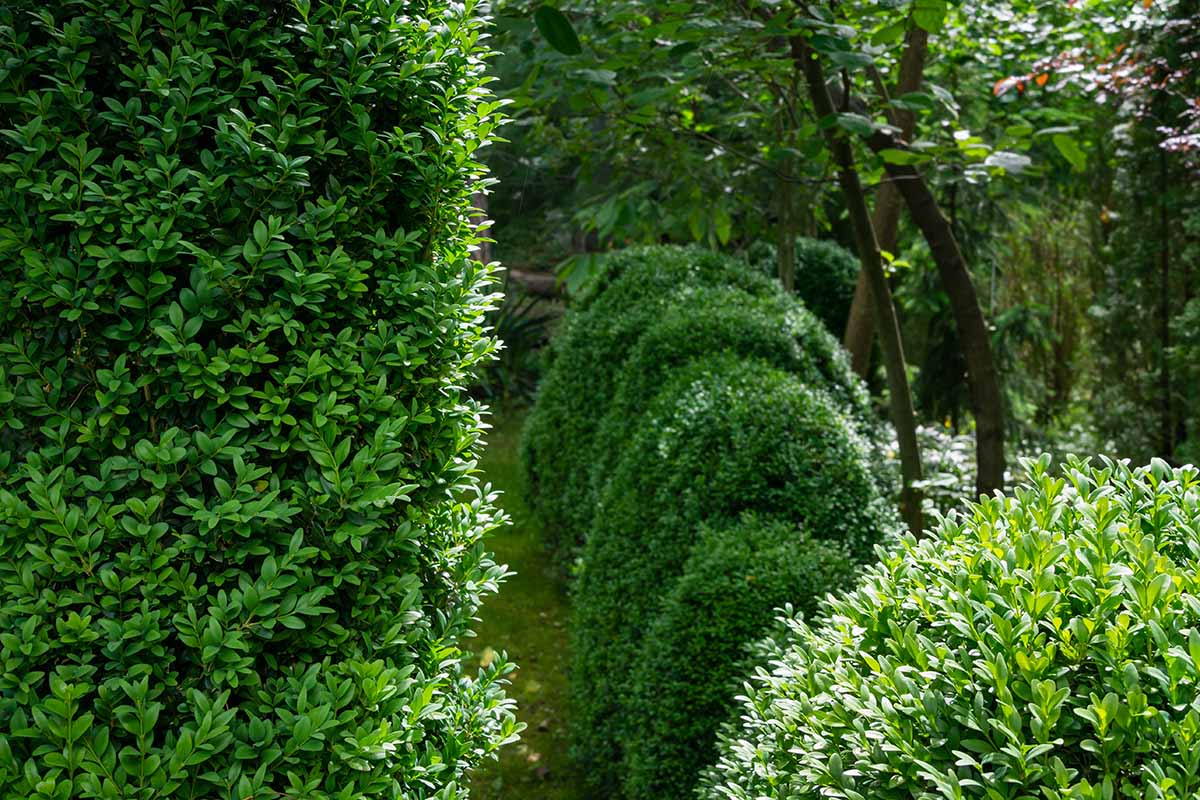
Additionally, a plant left alone can accumulate dead and damaged structures over time.
These tissues are perfect entry points for disease, so pruning away dead branches or broken stems as they appear will help shore up a plant’s defenses.
Infection goes hand in hand with infestation, unfortunately. A diseased plant is a stressed plant, and insects and other pests go after ailing plants more so than healthy ones. Infestation can follow sickness all too easily.
Vigor
Vigor is simply the growth rate of a plant, and pruning is a successful way of increasing it.
Plants consist of aboveground shoots and belowground roots, and they tend to grow in proportion with each other. Both structures collect the resources necessary for the plant as a whole to grow and develop.

But when the amount of shoots is suddenly reduced via pruning, now there’s an imbalance in the ratio of roots to shoots.
In order to regain balance, surplus energy from the roots goes into producing new shoots at a faster rate than before. Increased shoot growth equals increased rejuvenation and health, which is what you want.
What You’ll Need for Pruning
Depending on the size, height, and number of boxwoods you have, you may or may not need all the items on this list. But if you’re short an item that you need, your local garden center’s got your back.
We’ll recommend some products that are available online as well, from our trusted affiliates.
Heck, if you’ve got generous neighbors and a non-mooching reputation, you could probably get away with borrowing a tool or two from them!
Personal Protective Equipment
This is absolutely essential. Living dangerously is cool, don’t get me wrong… but so is having all your fingers and eyeballs.
A pair of durable gardening gloves is very helpful when pruning. They’ll protect your hands and help you keep a good grip on your tools.
For pruning a Buxus, look for cut- or puncture-resistant gloves that are also flexible. Garret Wade has you covered with some heavy-duty ones that resist punctures and cuts.
Heavy Duty Cut Resistant Work Gloves
Eye protection is another must, especially when you’re shaping foliage with sharp tools.
Granted, the risk of plant matter flying towards your face is lower with pruning boxwoods than it is with tree work. But there’s still a chance, and it’s better to be safe than sorry.
Plus, I occasionally wipe the sweat off my brow with the back of my dominant, pruner-holding hand, and I’d hate to poke out an unprotected eye. That would be a really lame story for how I got an eye patch.
When shopping for gardening eye protection, look for anti-fog, anti-scratch, impact-resistant, and/or UV-resistant glasses.
If you’re already bespectacled like me, then safety goggles will leave plenty of room for your prescription eyewear.

For premium safety glasses, NoCry has some available on Amazon.

If you need something to wrap around your spectacles, then Aquilius has a three-pack of wraparounds that you might like, also available on Amazon.
Hand Pruners
Hand pruners are used to make small, precise, and detailed pruning cuts. Even beyond pruning, a reliable set of hand pruners can make gardening a whole lot easier, so it’s definitely worth the investment.
If possible, select bypass pruners. Bypass pruners utilize a sharp blade which narrowly passes by another, just like a pair of scissors.
This allows for a crisp and clean cut, and you won’t dull the blades prematurely like you would with other cutting mechanisms.
A high-quality set of bypass pruners is available from Gardener’s Supply.
Hedge Shears
With their long and sharp blades, hedge shears yield a higher pruning volume per slice than hand pruners.
The blades are usually set at a slight angle to the handles, which makes both low and high cuts more comfortable.
And if you manage to snag a pair with telescopic handles, you’ll be able to prune those pesky, just-out-of-reach patches of Buxus.
Acquire a set of high-quality, telescopic-handled hedge shears for yourself at Garrett Wade.
Hedge Trimmer
If spending the entire afternoon with a jumbo pair of scissors in your hand sounds tedious, you can forgo the hedge shears and use a hedge trimmer instead.
A hedge trimmer’s “blade” has two rows of teeth on both sides, and the top row alternates back and forth, moving just above the lower row.
This creates a bilateral line of bypass-cutting teeth, which can be run through unshorn boxwood foliage like a very noisy knife through butter.
Hedge trimmers can drastically speed up boxwood pruning, provided they’re used effectively.
Since they’re power tools, hedge trimmers require caution and safe operating practices. Ear protection could also be needed, depending on the loudness of the model you’re using.
A hedge trimmer runs on either gasoline or electricity, with gas-powered models usually being the loudest, heaviest, and most powerful.
Electric trimmers either have rechargeable batteries or need an extension cord. Of the electric trimmers, battery-powered models offer convenience and ease of usage, while corded ones provide more power.
Sun Joe Cordless Hedge Trimmer
If you’re looking for a cordless hedge trimmer, Gardener’s Supply has what you need.
This 22-inch model from Sun Joe is lightweight and cordless, with nearly a full hour of charge!
You can also add a pole hedge trimmer to your collection to significantly extend your trimming reach, if necessary.
Sun Joe Cordless Pole Hedge Trimmer Kit
For a lightweight model with an adjustable blade angle, shoulder strap, and low-vibration design, visit Gardener’s Supply.
Rake
This tool isn’t so much for pruning boxwoods as it is for cleaning up afterwards. As you prune, boxwood clippings will often remain on the shrub itself, which takes away from that manicured look you’re shooting for.
A gentle combing of a pruned boxwood’s foliage will drag those unseemly clippings off the plant real good.
But tidying up a boxwood post-prune isn’t just for vanity: keeping your Buxus free of pruned detritus will help to keep it healthy, since dead plant parts are prime entry points for pathogens. All the more reason to break out the rake.
Speaking of which, a solid product for the job can be purchased from Garrett Wade.
This lightweight rake has a wide and long reach, with a comb that’ll actually fold in half for picking up piles of raked trimmings!
Isopropyl Alcohol
As tools move through plants, they’ll pick up any pathogens that reside in or on infected tissues.
These disease-causing agents can easily hitch a ride on tool surfaces and spread from plant to plant. Sanitizing your tools in between prunings can help reduce the odds of contagion spread.
A simple way of doing so is with isopropyl alcohol, which will kill any pathogens and sterilize your tools.
Use anywhere from 70 to 100 percent alcohol, with water making up the rest of the solution.

A bottle of 99 percent isopropyl alcohol is available from Solimo via Amazon.
Apply this sterilizing concoction by spraying or lightly pouring it onto tool blades and teeth. You can even dip the contaminated parts of your tools straight into the mixture. Be sure to wipe away the solution with a rag afterwards.
Don’t forget to exercise caution, as isopropyl alcohol is flammable and can irritate the skin.
When to Prune Boxwoods
For the casual Buxus owner, an annual pruning will be enough to promote aesthetics and health.
You’ll want to time it right before the plant breaks dormancy and has that first flush of spring growth. This will end up being in very late winter or early spring.

Late spring pruning is also acceptable, and may be ideal for those wanting an especially well-manicured shrub.
You won’t have quite as vigorous of a spring flush, but by pruning later in a boxwood’s growing period, the shrub won’t be warped and misshapen by new growth as much.
Small touch-up prunings can be done throughout the spring and summer, if laser-honed shrubs are the goal.
However, it’s important to remember that all pruning will stress a plant to some degree, so cultivate your boxwoods as healthfully as possible to withstand all that punishment.
Just like golf courses intensely care for their oft-mowed putting greens, you’ll also want to give your Buxus some heavy TLC if you’re gonna keep ‘em constantly trimmed up.
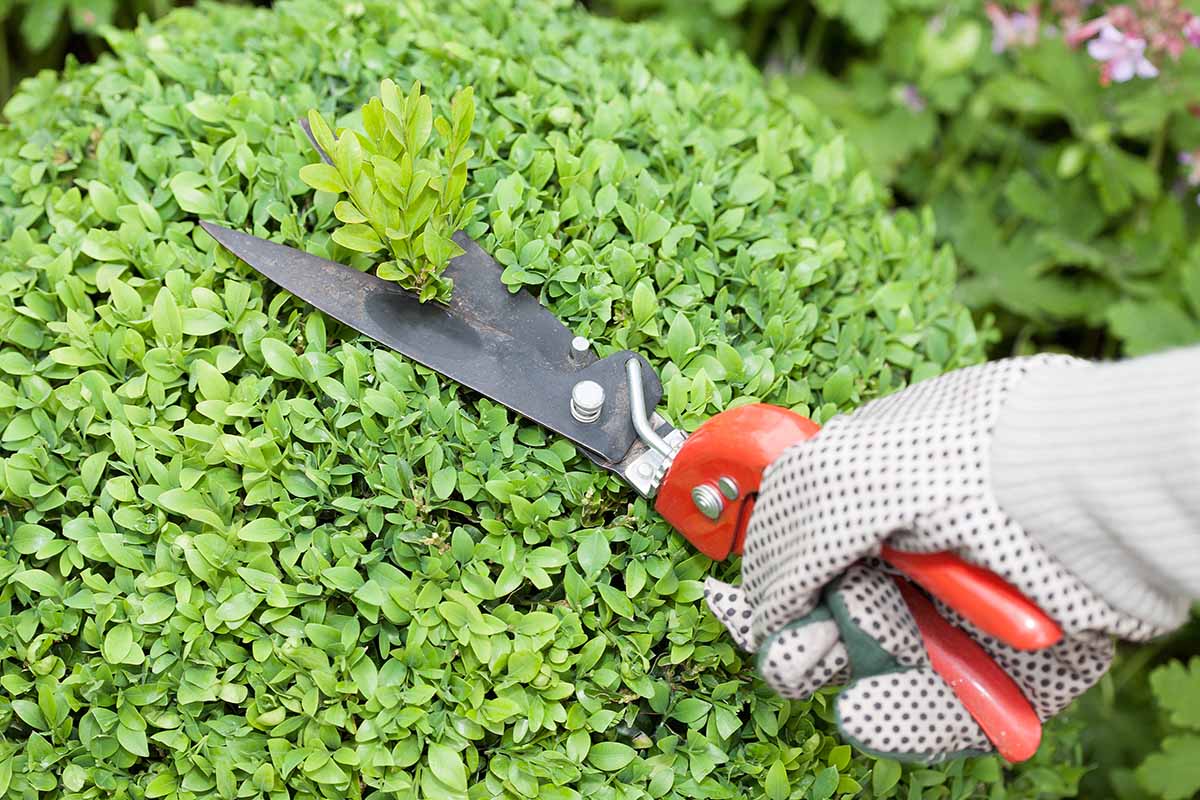
Avoid pruning during the tail-end of summer, the fall, and most of winter.
Pruning encourages new growth, and fresh shoots popping up this late in the game won’t allow enough time for cold hardening. Come wintertime, these ill-prepared growths won’t fare well.
The exception to all of this: finding dead or diseased branches in your boxwood shrubs. Remove these whenever they’re discovered, no matter the season. This will significantly aid in preventing disease.
How to Prune Boxwoods
There’s more than one way to skin a cat, and there’s more than one way to prune a boxwood. Let’s go over some techniques for specific pruning scenarios.
Removing Dead or Diseased Tissue
Whenever you spot necrotic or infected branches, get rid of them ASAP.
Prune them as far down as the dead and/or diseased tissue goes, which’ll probably take your cuts all the way to the base. A sturdy set of pruners is great for these tight, compact cuts.

An easy way to tell where the branch stops living is to scrape just the tiniest bit off the branch with a sharp edge, be it a fingernail or tool.
If the area underneath or on the underside of the scraping is green, then that part of the branch is living. But if it’s brown, then it’s dead.
Thinning
Thinning is a way of clearing up room within a plant, allowing light and air to reach the interior shoots. This will keep internal leaves alive and prevent out-of-sight diseases from festering.
Thinning boxwoods isn’t that complicated: just reach in and snip stems evenly throughout the plant.
Take off two to eight inches of stem with each cut, with small shrubs getting small cuts and vice versa. Leave at least one set of leaves on snipped stems for the sake of appearance.
After you’re done thinning, your Buxus should have around 10 percent of its mass pruned away throughout the plant. From a distance, the boxwood will have small holes that you’ll be able to see the interior of the plant through when you look closely.
Shaping
Shaping is the fun part, where your artistic skills really get a chance to shine. But unlike the painter sitting down to a blank canvas, you don’t have infinite possibilities here… at least, you don’t if you want to keep your boxwoods healthy.
Any type of shrub where the lower branches are trimmed to be narrower than the ones above is a no-no.
Inverted trapezoids, upside-down pyramids… it doesn’t matter. If the lower branches are blocked from receiving sunlight, the lower foliage will grow in all thin and misshapen.
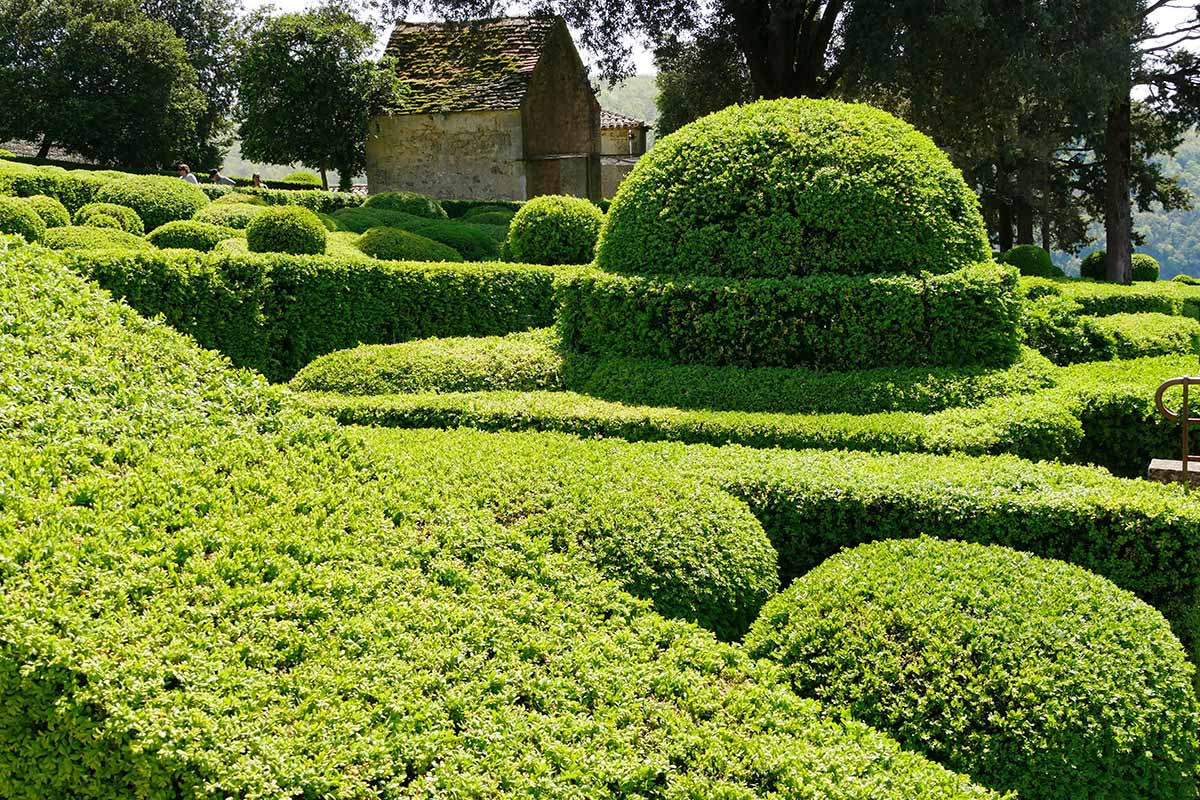
Of course, you can break that rule if you’re experienced at making sculptures out of Buxus. But when you’re just starting out, stick to safe shapes such as wide-based wedges and cones, rectangles and squares, or spheres and rounded forms.
As far as how to shape goes, that’s the easy part: just snip and trim until you create the desired shape.
Don’t remove more than a third of the plant’s mass in one go, and remember to start with small cuts. Step away occasionally as you work, so you can see the full picture.
You can always go back for another trim, but you can’t undo shearing too hard.
Cutting Back
Suppose you have the desired shape, but it’s just too big. Or maybe your shrub has grown too far into an unwanted zone. In either case, you’ll need to cut back your boxwood.

Cutting back your boxwood is just like shaping, but instead of creating a new shape, you’re just making it smaller.
The rule of one-third still applies here, but you don’t have to remove that third of mass from the plant evenly.
This is helpful for large boxwoods: take a third of the plant off on one side, wait a year, then do the same thing to the other side.
The Neighbors Will Swoon for a Nice Boxwood Prune
A well-pruned Buxus is its own reward, no doubt. But well-manicured boxwood hedges are also pleasing to the eyes of onlookers – and they won’t hurt your property value, either.

With this guide, hopefully you’re now equipped to start shaping your boxwoods into works of art.
Stay patient, because skill and expertise will only come with time and experience. If you happen to make a mistake, no sweat – there’s always next year!
Have questions, comments, or experiences of your own to share? Add them in the comments section below – I’d love to read and respond!
If you enjoyed learning how to trim this shrub, here are some other ornamentals worth brushing up on:
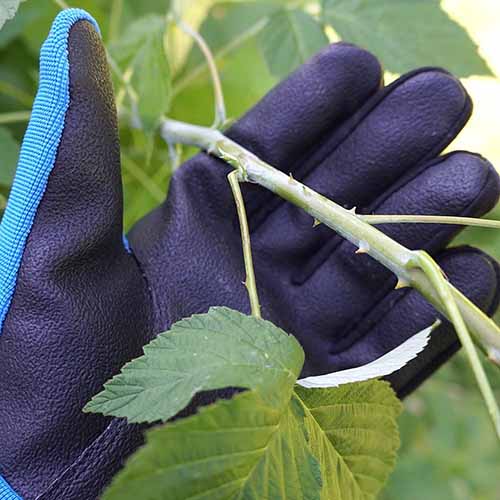
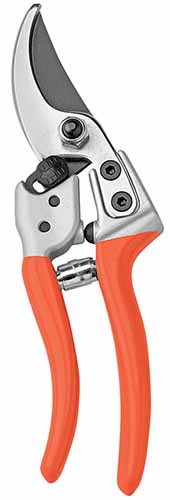
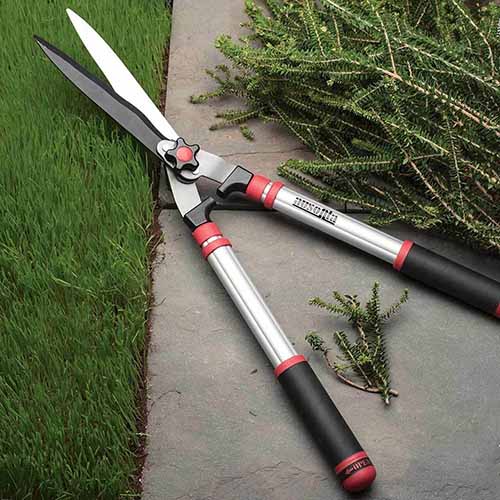
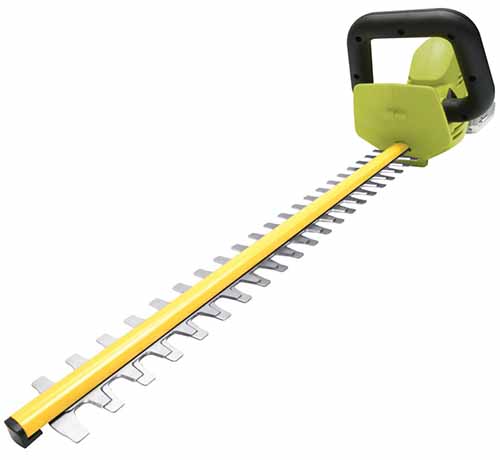
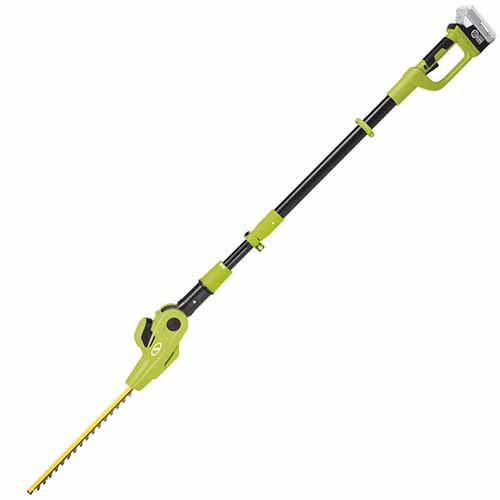
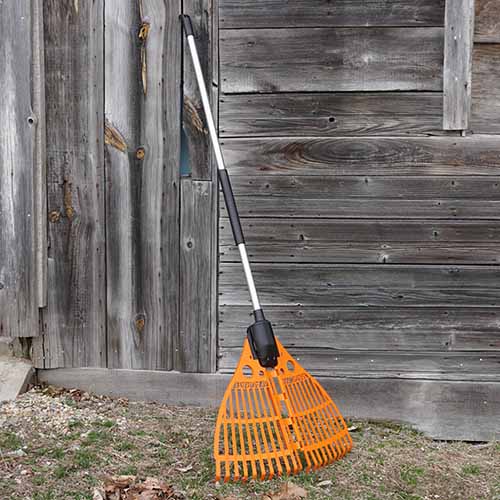


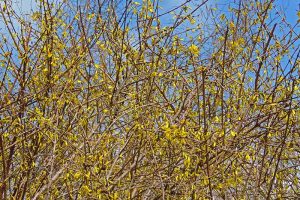
Excellent article!
A little humor tossed in; great explanations; nice pictures to describe the tools; thorough information.
Very well written!
I’m new to the neighborhood. Neighbors told me the Dogwood is 30-40 years old. What would you recommend I do to “save” the bush? I need it brought back off the sidewalk to the red line (pic. 1). Pic 2 is the base. If I cut the right branch off, there will be a hole in the front facing sidewalk. I’ve read new shoots and leaves will eventually grow, maybe not in my lifetime. That area is very dense and tight. Task one is thinning inside and it is thick with dead, brown, leafless, toothpick twigs. I can reach in… Read more »
Hi Mike, I’ve managed to retrieve your picture. Joe will be along soon to take a look and answer your questions!
Hey Mike, thanks for reaching out! I’ll try and tackle your questions one at a time, in the order you asked them. From your first two pictures, your boxwood seems fairly lush and healthy, especially for being alongside a sidewalk and parked car. I think pruning the shrub past the orange line you drew should be fine, as long as you don’t take off more than a third of the plant at once. After pruning, the plant should grow more foliage along the bare stems in time, but you’ll want to keep this new growth pruned back to stop it… Read more »
Excellent arrival . Very useful . Thanks ????????
My boxwoods (2) out of six round separate in a half circle have dead “holes” in them on each side. What is the cause? Will it spread to others? Can I spray for disease or must I cut everything out now. What type of local “pro” can I contact to help me with this as I’m physically challenged?
Hey Lin! That’s a shame about your boxwoods… I’m having a bit of trouble visualizing your problem, I don’t suppose you could share some images of your afflicted boxwoods?
But in the meantime, the removal of dead/diseased tissue and/or consulting pros never hurts.
Hi, I cut almost all of the top off a very ugly leggy buxus in a pot. I left 2 branches with green on them. All the wood that is left is still green but no shoots have appeared.
How long ago did you do this cutting?